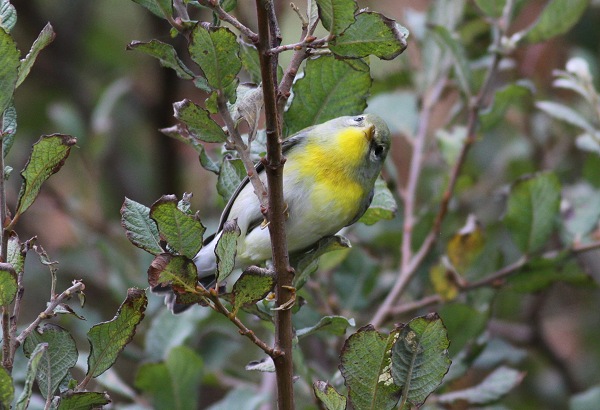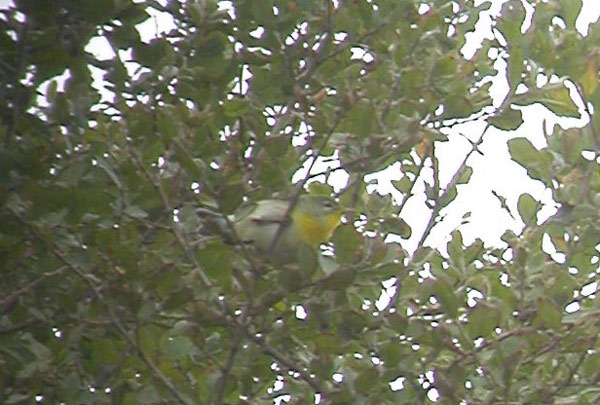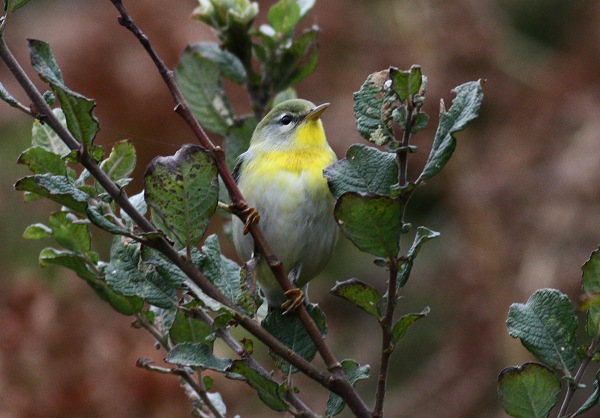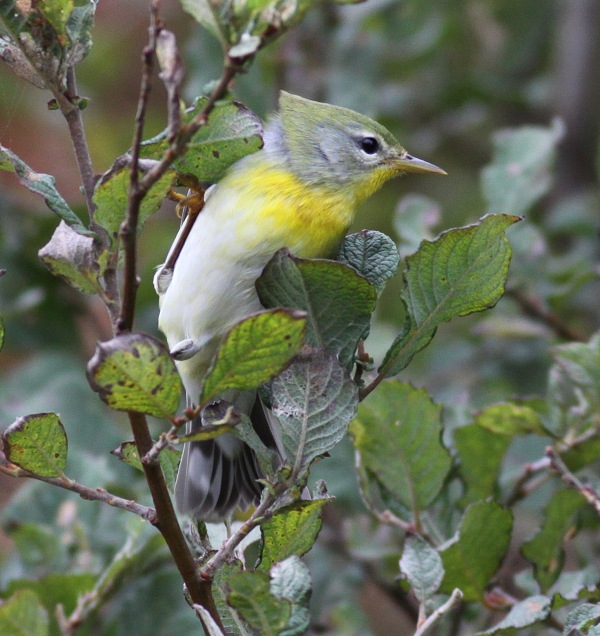|
Northern Parula on Tiree - finders
account |
|
|
|
Britain 15th ever Northern Parula and the
first twitchable one for nearly 18 years! (© John Bowler) |
|
My local patch is Carnan Mor, a small patch of willow and hawthorn bushes on the lee side of Ben Hynish in the SW corner of the Isle of Tiree in the Inner Hebrides. Lying just 200m from my house, I like to check the “wood” at least once a day during migration periods, as it represents the best natural piece of bushy cover on the island and has proven to be a honey-pot for migrant passerines. Daily checks of the bushes, together with nearby gardens at Balephuil over the last few autumns have revealed a regular turnover of commoner warblers such as Chiffchaff, Willow Warbler, Blackcap and Garden Warbler, whilst Lesser Whitethroat, Yellow-browed Warbler and Barred Warbler have all proved to be more or less annual visitors. |
|
|
|
Northern Parula on Tiree (© Stuart Piner) |
|
On 25 September, light NE winds had got me thinking about an early Yellow-browed Warbler and after a morning of painting the house I decided to head up to the little wood and see what was new in. A group of redpolls in the field behind the house included a larger dark Greenland bird, which encouraged me further and I cautiously approached the main bush clump. Warblers are usually obvious in the sparse cover and after five minutes and just 2 Blackbirds and a Song Thrush, I was starting to think about moving on. However, a movement at the back of large hawthorn caught my eye. Small and bright, I assumed it was going to be a Willow Warbler or Goldcrest, but as it emerged into the open just 10 feet away, I realised that this was something much more special! With its bright yellow throat and upper breast, green crown, white “eyelids”, golden-green mantle and bluish wings bearing bold white wing-bars, it was quite clearly a Northern Parula! Staying as calm as I could I slid out my Nikon Coolpix camera and fired off some record shots, before the bird moved on to the next bush with a soft “Sip!” call. |
|
|
|
Northern Parula on Tiree (© Stuart Piner) |
|
Knowing that the bird would not be twitchable until the following day, I stayed with it and watched it for some 2 hours as it flicked around the bushes. The rather muted colours (for a Parula!), lack of orange in the breast and green tones on the crown suggested that this was a female, whilst the greenish fringes to the flight feathers indicated a bird in its first-winter. It was often in the company of a Goldcrest, which looked dull by comparison, but which emphasised the small size of the bird. The local Wrens didn’t like it much and spent much time chasing it, but it seemed settled enough, so I left it to fetch my wife Janet to see it and also put the news out. |
 |
|
Northern Parula on Tiree (© Stuart Piner) |
|
Carnan Mor has a poor record of holding onto good birds, Western Bonelli’s and Blyth’s Reed Warblers have both been one-day wonders there and thwarted attempts by folk to twitch them, so with chartered planes on stand-by it was with baited breath that I checked the wood at first light the following morning. I needn’t have worried however, as the bird showed immediately in its favoured bushes and indeed remains in the area as I write this today (29th Sept) delighting all those who made the long trek over to see it. On two occasions, it even ventured into our own garden at Balephuil, which made a nice addition to our garden list! |
|
John Bowler |


